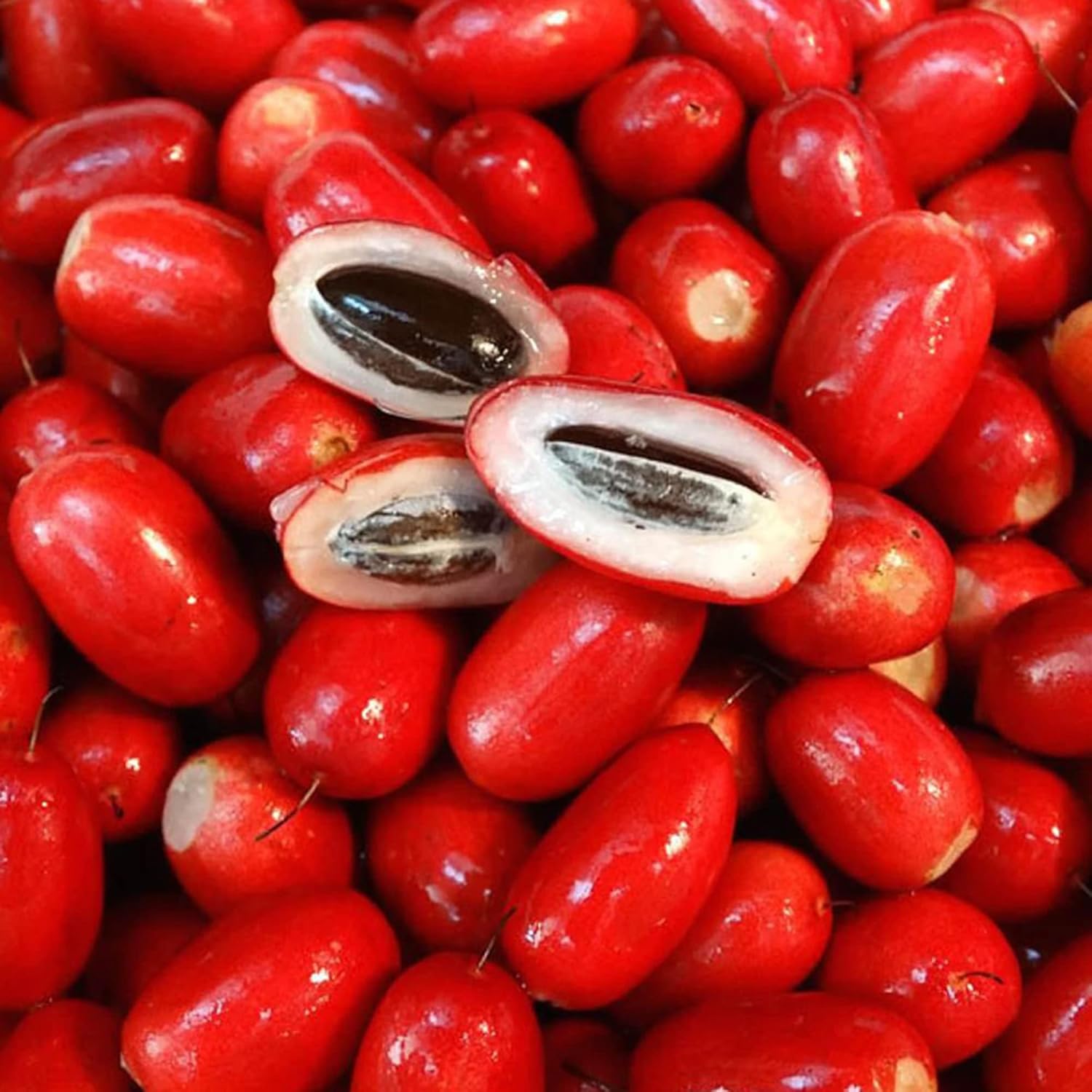
Dharaseeds
Synsepalum Dulcificum Seeds
Estimated delivery between April 15 and April 18.
Synsepalum Dulcificum Seeds - Miracle Berry, Miracle Fruit, Red Berries, Outdoor Plant
Product Overview
The Miracle Berry (Synsepalum dulcificum), also known as Miracle Fruit, is a tropical plant native to West Africa. This unique plant is famous for its small red berries, which contain a glycoprotein called miraculin. When consumed, miraculin temporarily alters your taste buds, making sour foods like lemons, limes, and vinegar taste sweet. This natural effect lasts for up to an hour, making it a fun and surprising fruit for your garden.
Key Features:
- Common Name: Miracle Berry, Miracle Fruit
- Scientific Name: Synsepalum dulcificum
- Fruit Color: Bright red
- Plant Type: Shrub or small tree
- Sunlight Requirements: Full sun to partial shade
- Soil Requirements: Well-drained, acidic soil
- Height: 2-3 feet in pots; up to 6 feet when grown in-ground
- Hardiness Zones: USDA Zones 10-11 (Tropical regions)
- Uses: Edible berries, fun for taste experiments, ornamental plant
- Non-GMO and Organic: Pure, naturally grown fruit
Benefits of Miracle Berry Seeds
- Taste Transformation: The unique effect of miraculin makes sour foods taste sweet, offering a natural way to enjoy acidic fruits and dishes without added sugar.
- Tropical Ornamental Shrub: The plant itself is attractive, with glossy green leaves and clusters of small white flowers that eventually yield the red berries. It’s a great addition to gardens, both for its appearance and its novel fruit.
- Health Benefits: The Miracle Berry is rich in antioxidants and provides a fun, healthy way to experience flavors differently. It can also be a useful tool for those trying to reduce sugar consumption.
- Perfect for Home Gardens: Whether you grow it indoors or outdoors, this plant is well-suited for smaller spaces, as it thrives in pots and containers.
Planting and Growing Instructions
- Site Selection: Choose a spot with full sun or partial shade. Miracle Berries require warmth, so they are best suited to tropical and subtropical climates. For colder climates, consider growing them in containers that can be brought indoors during the winter.
- Soil Requirements: Miracle Berries prefer slightly acidic, well-draining soil. You can use a specialized acidic soil mix, often available at garden centers, for optimal growth.
- Planting: Sow seeds indoors or in a greenhouse and transplant them once they’ve established a healthy root system. Ensure that the seeds are lightly covered with soil.
- Watering: Keep the soil moist but not soggy. Miracle Berry plants thrive in humid conditions, so regular misting or placing a humidity tray beneath the pot can help.
- Fertilizing: Use a balanced, slow-release fertilizer or one designed for acid-loving plants during the growing season. Avoid over-fertilizing, as this can harm the plant.
Care and Maintenance
- Pruning: Prune your Miracle Berry plant to maintain a neat shape and encourage better airflow. Regular pruning can also help promote the growth of fruiting branches.
- Mulching: Add a layer of mulch to the base of the plant to help retain moisture and suppress weeds.
- Winter Care: If you live in a colder climate, bring your plant indoors during winter months to protect it from frost. Miracle Berries are tropical and sensitive to frost.
- Pest Management: Keep an eye out for pests like aphids and scale insects, especially if you’re growing the plant indoors. Treat with organic insecticidal soap if needed.
Why Choose Miracle Berry Seeds?
The Miracle Berry is not just a fun plant to grow, but also a conversation starter. Its ability to alter taste makes it a unique experience for anyone who enjoys experimenting with food. Whether you're growing it for its novelty or its health benefits, it can be a valuable addition to your garden.
Add some excitement to your garden with Miracle Berry Seeds today, and experience the amazing taste transformation!






